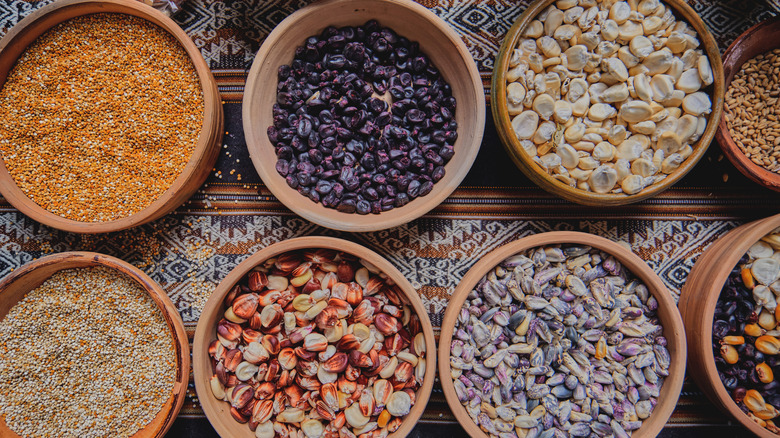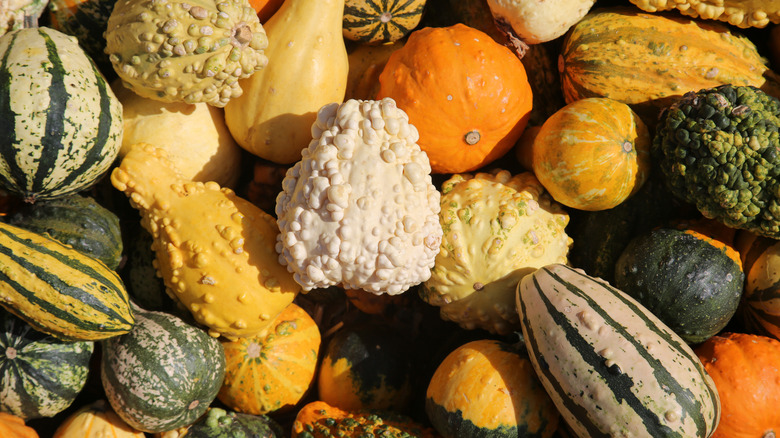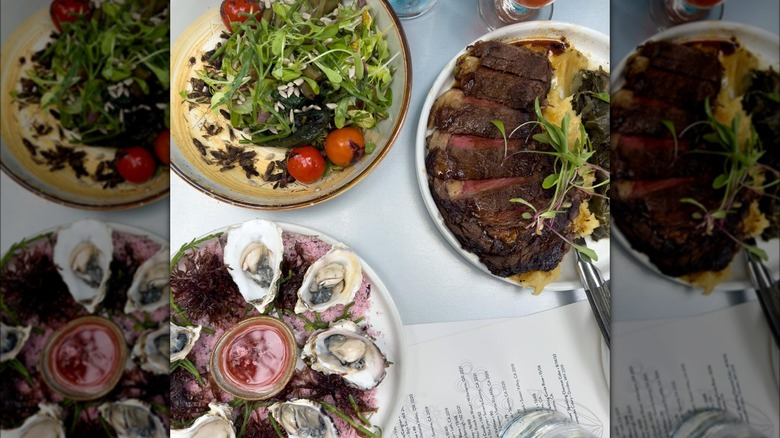What To Eat In Celebration Of Indigenous Peoples Day
Indigenous Peoples Day is observed across the United States on the second Monday of October. Recognized by the federal government as of 2021, it's part of a push to honor the storied past and very real present of indigenous communities across the country. Although it's a history wrought with the ramifications of colonization, forced migration, and cultural erasure, Indigenous Peoples Day is also a time to honor the resilience and joy of communities native to this land.
Of course, food is an important part of any celebration, and Indigenous Peoples Day is a great opportunity to learn about foods native to the area you live in and also to explore recipes from the tribes that call these regions home. If you don't know which tribal territory you may live in, consult this map from Native Land Digital.
From there, you can look at the foods that have long been native to that particular region for hundreds of years. For example, indigenous communities that live by the ocean would have eaten a lot of fish, while those living in the plains would have eaten more bison. Harsh climates meant seasonal crops like heirloom corn were of great importance whereas temperate climates allowed people to forage for foods like nuts and berries year-round. Also important to note is that all pre-colonial foods of Turtle Island — now known as North America — did not include dairy, wheat, soy, cane sugar, pork, chicken, or beef.
What is considered indigenous food?
For some, indigenous foods are those that can be locally grown while eliminating all ingredients that arrived post-colonization. For others, it's a balance of highlighting foods that are native to the Americas, while also acknowledging the ingenuity of people who were forced onto largely arid reservations and only had access to government-supplied processed foods, like canned meat and powdered milk. Fry bread — a simple puffy fried dough — was one such dish born from those rations.
Before illegal settlement and the forced movement of indigenous people from their ancestral homes under the Indian Removal Act of 1830, people cultivated, foraged, and hunted from the land around them, always with respect for the balance of nature. In the northwest United States, protein sources included fish like salmon, trout, halibut, and herring, as well as wild game like deer and rabbit. Acorns, hazelnuts, huckleberries, crabapples, and hawthorne were also commonly consumed.
In the southwest, cacti, mesquite beans, turkey, agave, and insects were part of the indigenous diet, while pumpkin, sunflowers, pecans, prickly pear fruits, snails, oysters, crawfish, and alligator were eaten in the area around modern-day Texas. Foods like maple syrup and wild rice are native to the north and northeastern United States.
Dishes you can make to celebrate
After marking the occasion of Indigenous Peoples Day — perhaps by attending a celebration, visiting a museum, or supporting indigenous people through donations to organizations — you can continue the festivities at home by making something with ingredients native to your area and buying the ingredients from indigenous growers, if possible.
A "three sisters” meal is a great place to start for your table. The three sisters are corn, beans, and squash (indigenous people developed a symbiotic co-planting method to grow these crops). The corn stalk grows tall and the bean vine wraps around it, while the spiny squash leaves grow wide and low, locking in moisture, shading out weeds, and deterring pests. These plants help each other grow, replenish the soil, and provide a balanced meal. Chef Sean Sherman and Beth Dooley, authors of "The Sioux Chef's Indigenous Kitchen," serve the three sisters in a salad with dandelion greens, mint, and smoked trout.
You can take inspiration from what other indigenous chefs are cooking up, too. Crystal Wahpepah, who is Kickapoo, Sac, and Fox, makes bison meatballs with blue corn mush. Sherry Pocknett, a part of the Wampanoag tribe, serves fish tacos on fry bread, and Diné and White Mountain Apache chef Nephi Craig serves venison shank with roasted vegetables.
Chef Sherman puts it simply, telling the Food and Agricultural Organization that indigenous food "is making food taste like where you are."



